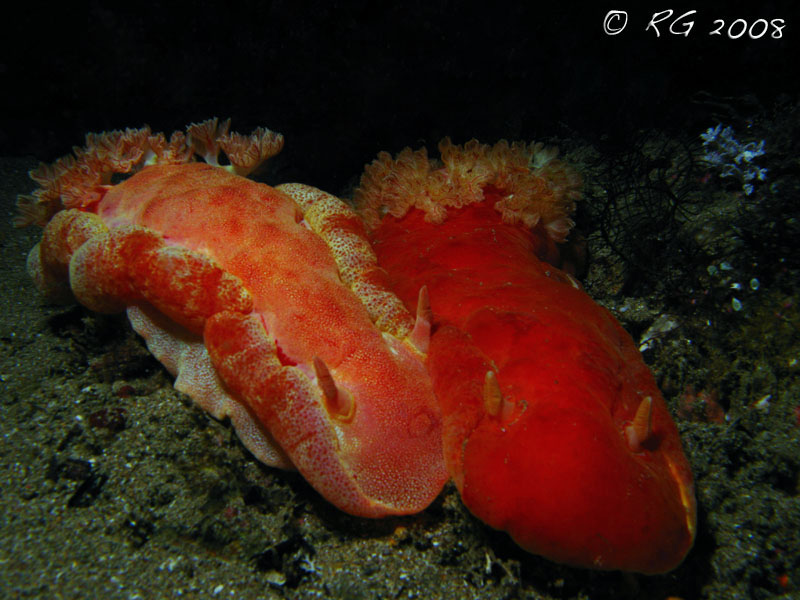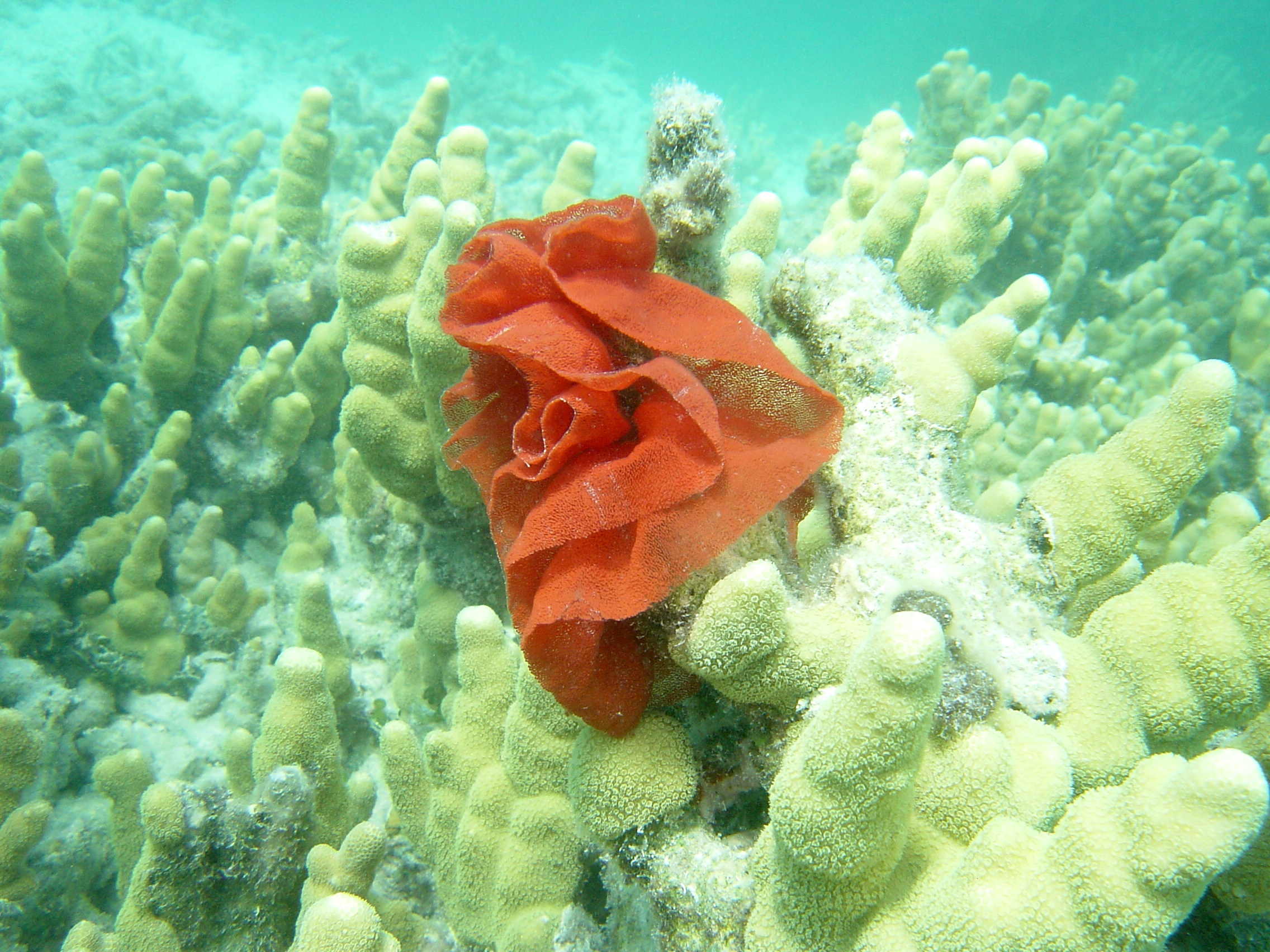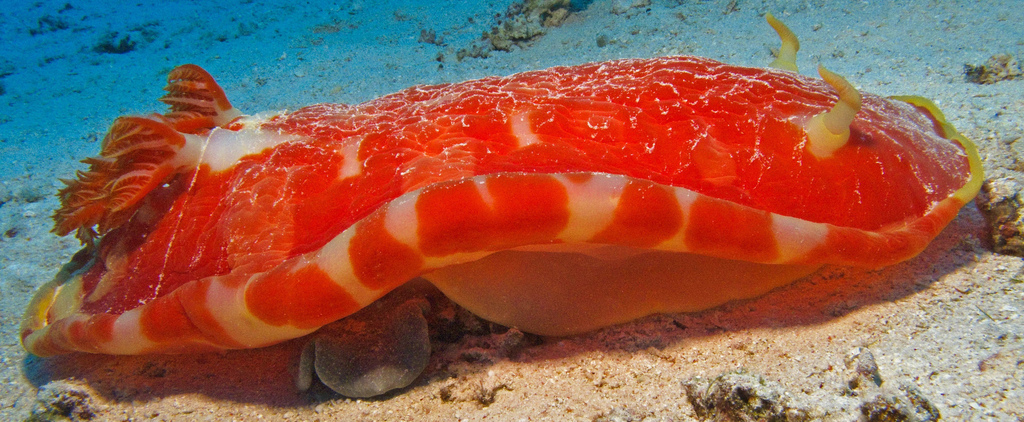Reproduction
 The Hexabranchus sanguineus
have a unique reproductive trait about them. Spanish dancers are
hermaphrodite organisms. This means that they can carry both female and
male sexual organs together in their body. They do not self-fertilize
however, but reproduce sexually. The Spanish dancer nudibranch is
sexually active throughout the whole year but their activity dies down
during the cold months (Francis 1980). Sex occurs when two
nudibranchs align themselves up side by side, called copulation, where the male then exchanges
sperm sacs. After sex, it may take moments or
days before the Spanish dancer is ready to lay her eggs. When
the female is ready she will lay her eggs on top of coral or on
part of a rock, usually near her food source. She lays a
ribbon-like structure with thousands of eggs forming what divers
call a "sea rose".
The Hexabranchus sanguineus
have a unique reproductive trait about them. Spanish dancers are
hermaphrodite organisms. This means that they can carry both female and
male sexual organs together in their body. They do not self-fertilize
however, but reproduce sexually. The Spanish dancer nudibranch is
sexually active throughout the whole year but their activity dies down
during the cold months (Francis 1980). Sex occurs when two
nudibranchs align themselves up side by side, called copulation, where the male then exchanges
sperm sacs. After sex, it may take moments or
days before the Spanish dancer is ready to lay her eggs. When
the female is ready she will lay her eggs on top of coral or on
part of a rock, usually near her food source. She lays a
ribbon-like structure with thousands of eggs forming what divers
call a "sea rose".
 She does this so the eggs blend in with the
coral, yet remain recognizable to her. Since the Spanish dancer
eats toxic sponges, she can secrete her poison on to her eggs so
that predators such as crabs, lobster and reef fish aren't able
to eat them. This also means that she will not have to sit over
the eggs to protect them. Along with this the Spanish dancer has
an indirect life cycle. This means that after the
Hexabranchus sanguineus eggs hatch, they grow up through
larval stages. Since their life expectancy is only one year,
they will mature very fast. They grow into the one of the
largest nudibranchs, with animals being recorded at over 40cm in
length (Rudman 1999).
She does this so the eggs blend in with the
coral, yet remain recognizable to her. Since the Spanish dancer
eats toxic sponges, she can secrete her poison on to her eggs so
that predators such as crabs, lobster and reef fish aren't able
to eat them. This also means that she will not have to sit over
the eggs to protect them. Along with this the Spanish dancer has
an indirect life cycle. This means that after the
Hexabranchus sanguineus eggs hatch, they grow up through
larval stages. Since their life expectancy is only one year,
they will mature very fast. They grow into the one of the
largest nudibranchs, with animals being recorded at over 40cm in
length (Rudman 1999).
